Soviet T-43 Class Minesweeper- Hurghada- Egypt
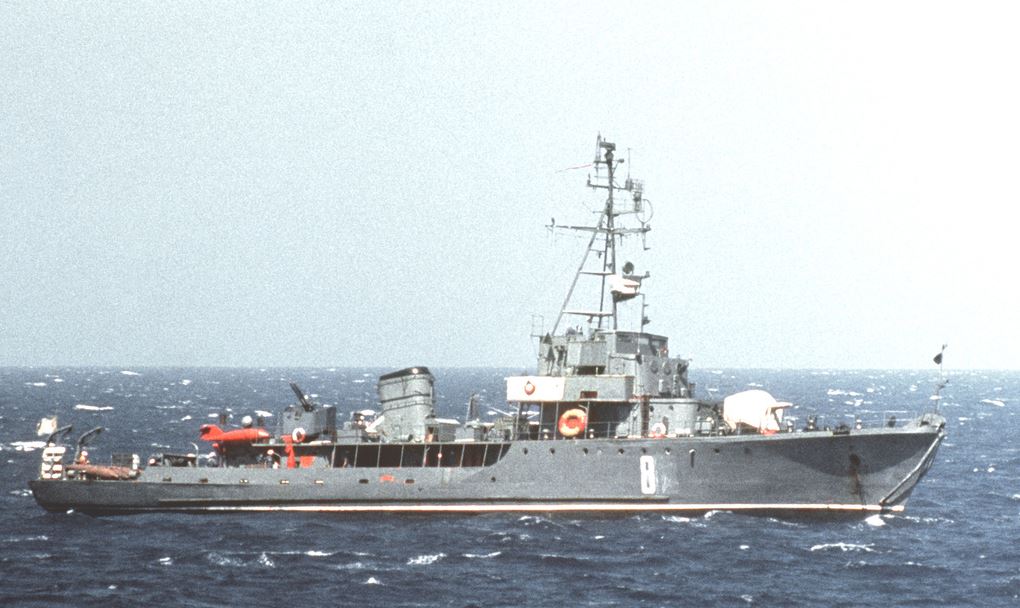
The Russians built 178 T-43 Class Minesweepers during the latter stages of WWII, they were based on a design variously attributed to either the UK or the US. Presumably, as the Soviet Union was an ally to the West at the time, the design was shared freely, although there seems to be no definitive record of that or the specific design origin either. The Soviet T-43 minesweepers were built in Russia (Leningrad & Kerch), in Poland and even in China (Licensed kits at first and then wholly locally). The Russians sold or gifted 44 of these vessels to Pro-Soviet regimes or satellites, with Egypt receiving 7 of them after the Moscow-Cairo arms deal, of 24th of September 1955, negotiated between Russia’s First Secretary of the Communist Party, (the country’s leader) Nikita Khrushchev and Egypt’s President Colonel Gamal Abdel Nasser
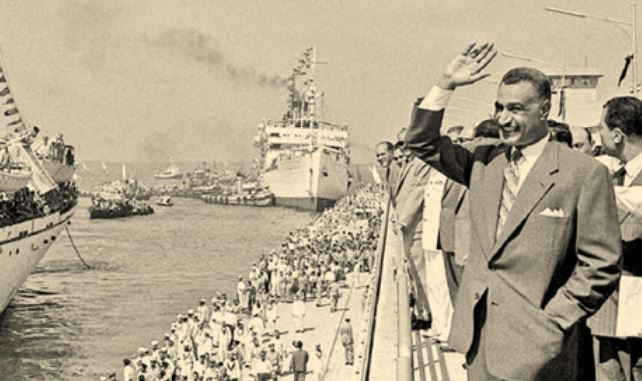
The Egyptian declaration nationalising the Suez Canal Company 26th July of 1956 provoked swift retribution, Israel invaded, backed by Britain and France (Operation Musketeer) in an attempt to oust Nasser and re-establish control over the strategic maritime highway and trading route. The Soviet Union, seeing this as an attempt to undermine their own efforts to increase their influence in the region, began to make serious threats to back Egypt, this pushed the United States to issue stern warnings to Moscow to stay out of the conflict, it looked like a Third World War was imminent

It took the threat of economic sanctions against Israel, Britain & France by Eisenhower (US President) to end the conflict. Britain & France withdrew in December of 1956 and Israel followed shortly after leaving a United Nations peacekeeping force in the area to monitor the situation and allow Egypt to re-open the Canal in March of 1957. It seems the region has always been and perhaps always will be just “one step closer to the edge” than the rest of the world…….but let us steer back towards the El Minya, newly delivered to the Egyptian Navy and, as far as I can determine, playing no part in the Suez Crisis other than perhaps as a catalyst to the wider picture in terms of international political allegiances…….
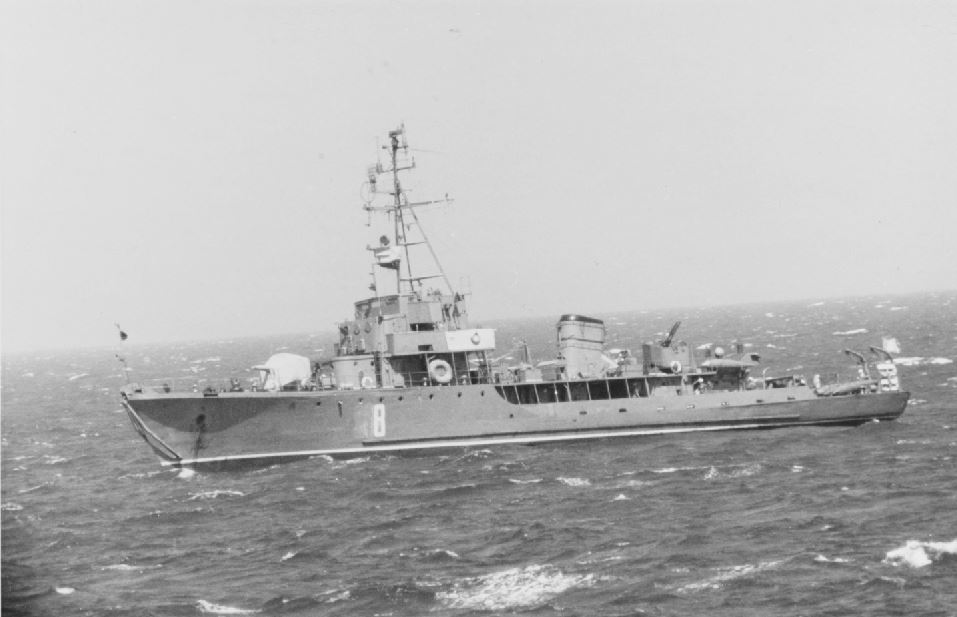
El Minya was delivered in spring 1956, one of four T-43 ocean-going minesweepers built in former USSR, and delivered as part of a $120 million arms supply. The four T-43 minesweepers delivered in 1956 were named after four different Egyptian cities: Minya, Bahaira, Gharbia and Assiout the hometown of President Nasser himself. For those of you who love the technical details Minya & the T-43 minesweepers were configured like this:
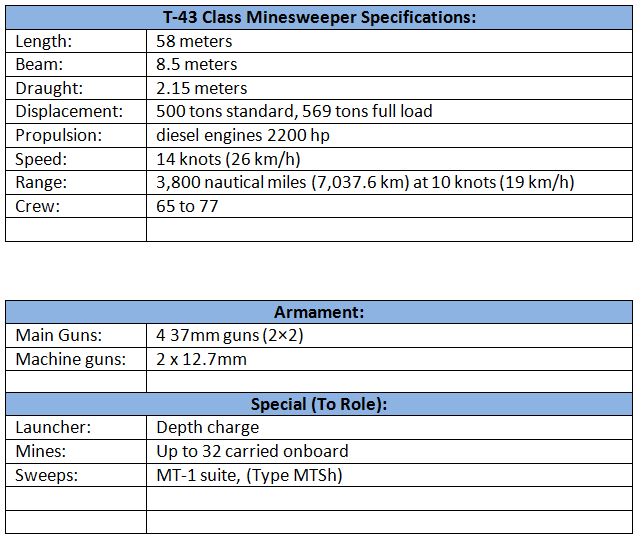
If you thought the end of the “Suez Crisis” would bring about peace in the area events would prove otherwise and although Britain and France withdrew, as the Israeli’s did, eventually, really what ensued was just a lull. The area was rife with tensions, the Israeli’s were on the verge of becoming a nuclear power, the Palestine Liberation Organization (PLO) were named as an official body by the areas Arab League, a loose confederation of Middle eastern Nations supposedly sharing power in the region. The source of the Jordan River was to be diverted into Syria to the benefit of Syria and the Lebanon, but to the detriment of Israel, and Syria was sponsoring PLO attacks into Israel to weaken its hold on Gaza (“The Six Day War (1967)” Ynetnews Online resource: https://www.ynetnews.com/articles/0,7340,L-3611488,00.html Accessed: 18/05/2023). April 07th 1967 heralded the shooting down of six Syrian MIG fighter jets by Israel, following a border incursion over Israeli territory, Syria turned to Egypt for support

By May Egypt’s response and it’s rhetoric was ramping up, President Nasser sent nearly 1000 tanks and seven divisions of Egyptian troops into Syria. That move was somewhat influenced by Russia’s insistence to Egypt that the Israeli’s had deployed in force along the Syrian-Israeli border, Nasser demanded the removal of all UN troops from the Sinai and Gaza, immediately following that evacuation Jordan deployed troops along Amman’s Israeli border and war was inevitable. Egypt closed the Straits of Tiran to Israeli ships, a direct provocation to Israel “if IDF Chief of Staff Yitzhak Rabin wants war, then he was welcome to it.” (Nasser quoted in “The Six Day War (1967) Ynetnews) Jordan pledged its troops to Egypt, Iraq and her allies followed suit and in answer Israel formed a new government and made the now global figure, Moshe Dayan, its minister of defence. June 4th Israel carried out a pre-emptive air strike and by the next day had destroyed 350 Arab Alliance aircraft and obliterated their airfield runways for the loss of only 20 of their own jets. At first Egyptian airfields were hit, closely followed by those of Syria and Jordan in what was called “Operation Focus”, when it ended over 450 alliance aircraft were destroyed giving Israel almost complete air superiority for the loss of just 46 IAF jets
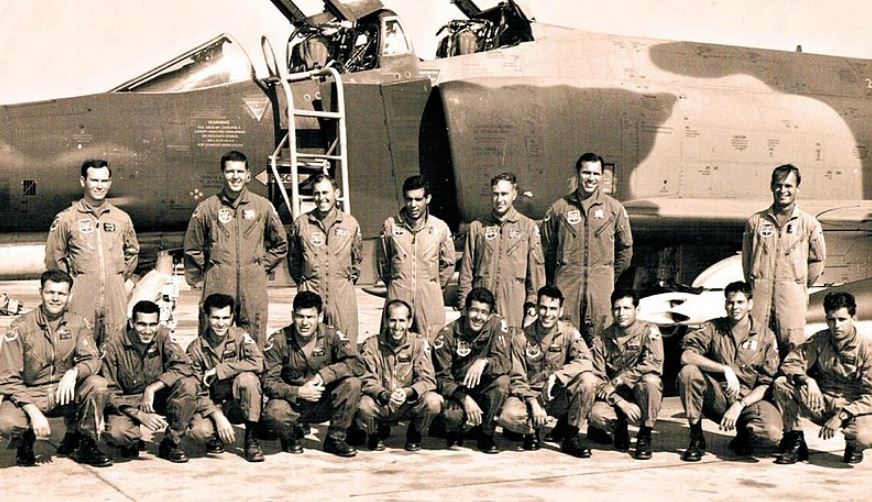
Whilst the air battle was swift and decisive, the war on the ground was a more drawn out affair. This is mainly a tale of the Air and the Sea more than it is of land battles, suffice to say that despite very large Syrian, Egyptian and Jordanian forces the Israeli’s strategy and execution overwhelmed the alliance force. I suggest those of you who want to learn more of the land conflict read the Ynet news pieces quoted in this text, but I will leave you with this quote from the 6 day war article: “The Six Day War saw the military advantage held by Israel’s neighboring Arab countries annihilated as hundreds of tanks were destroyed, over 15,000 enemy soldiers were killed or wounded and some 6,000 were taken prisoner”. A decisive victory for Israel

Eventually, what started as a violent war fell again into a lull, now known as “The War of Attrition” and, although there is no officially recognised start date, it can be considered in effect from around March of 1969. (“War of Attrition (1969-1970)” Online Resource: Ynetnews 22/10/2008 Accessed: 18/05/2023). Nasser was determined to regain Sinai and started shelling the Israeli’s, and both sides executed raids and incursions, but no land was won or lost and the fighting concentrated around Suez. In October of 1967 the Egyptian Navy sank the Israeli destroyer INS Eilat off Rumani and in 1968 Egyptian forces bombarded IDF outposts in the Suez Canal and in 1969 the Egyptian Navy took possession of the Soviet T-43 Class Minesweeper El Minya………
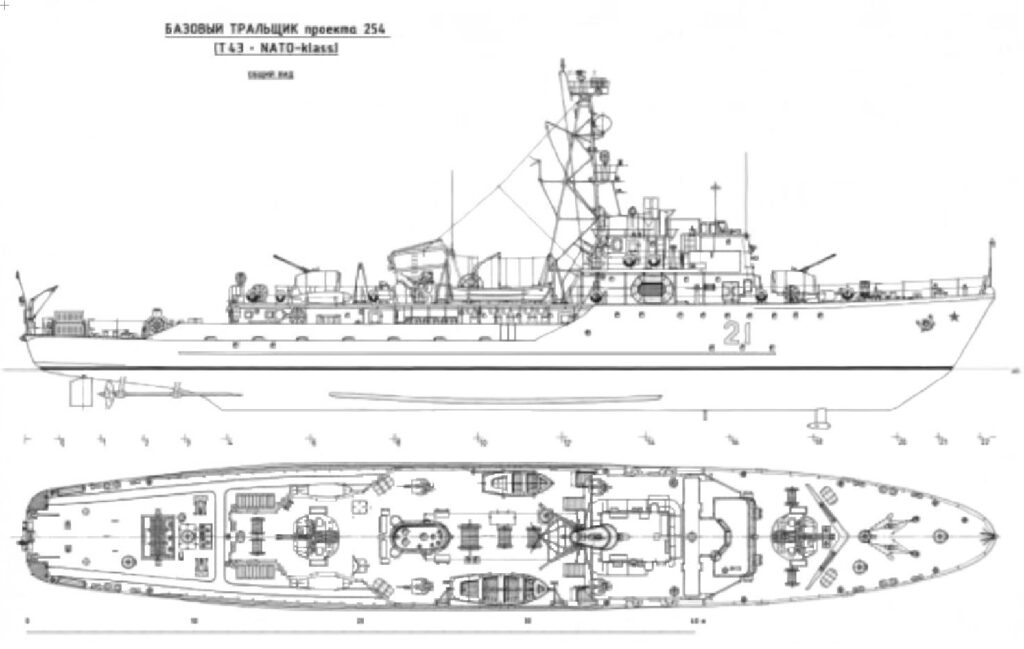
Now there isn’t a great deal I can say about El Minya’s journey to the Red Sea port of Hurghada, there isn’t a great deal available to review and I’m sure what was available at one time, and likely classified information at that, was very limited. The Egyptian Navy would keep vessel movements limited to those who needed to know to avoid military compromise but by whatever means El Minya arrived in the Southern Red Sea port of Hurghada and anchored off the commercial dock to the South of what was then a small fishing village and port, what has become in more recent times a busy tourist area and diving resort
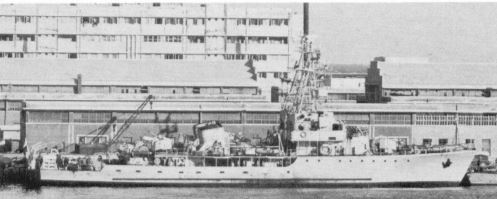
201 Squadron originated as a result of the Suez Campaign, using Kurnasse Phantom 4E aircraft deployed to Ramat David in October 1956. They were the first Israeli Air Force (IAF) Squadron to operate F-4E Phantoms. In September of 1969 they were under the command of Shmuel Hetz, the unit was tasked to carry out anti-RADAR and anti-Surface to Air Missile site attacks against the alliance bases in Suez and the Red Sea coast. Operation Priha (Blossom) was planned as a series of strikes against targets in the Egyptian heartland. The strikes were carried out by the 201 sqn Phantoms and the squadron achieved its first IAF kill (11th November 1969) against an Egyptian Air Force (Soviet) Mig-21, one of the Priha attacks is known to have been executed against a SAM site near Abu Sueir in October 1969
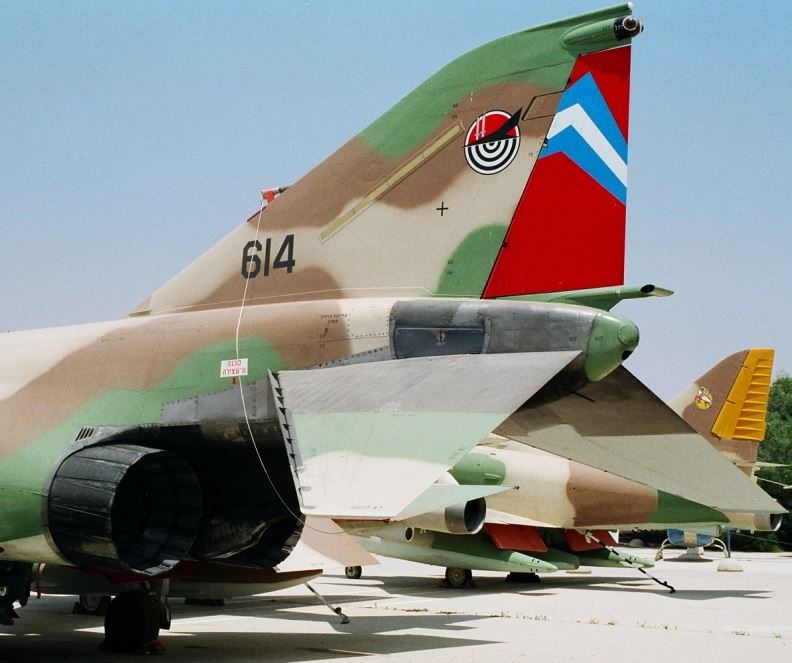
On the evening of the 06th February 1970 Kurnasse Phantoms of 201 squadron streaked low over the gulf from the East, beneath Egyptian RADAR capability, giving them the element of complete surprise as they attacked the Air Base and nearby air defence systems at Hurghada. It isn’t known if the Israeli’s knew in advance that El Minya was anchored in the harbour, but her anti-aircraft guns would have made her a significant threat and a high value target of opportunity in any case. It was only 15 hours earlier that Egyptian commandos had attacked two Israeli naval vessels moored in Elath harbour in the Gulf of Aqaba, one of the vessels, a 500‐ ton supply vessel, sank within an hour after magnetic mines attached to her hull exploded, reports say most if not all her crew escaped the sinking ship. El Minya would meet a similar fate that day, hit by at least one charge on her starboard side at her bow, probably another landed in close proximity as there is clear percussion damage toward her stern, likely from air to ground missiles from the 201 squadron “Heavy Hammer” (Kurnasse) Phantom’s
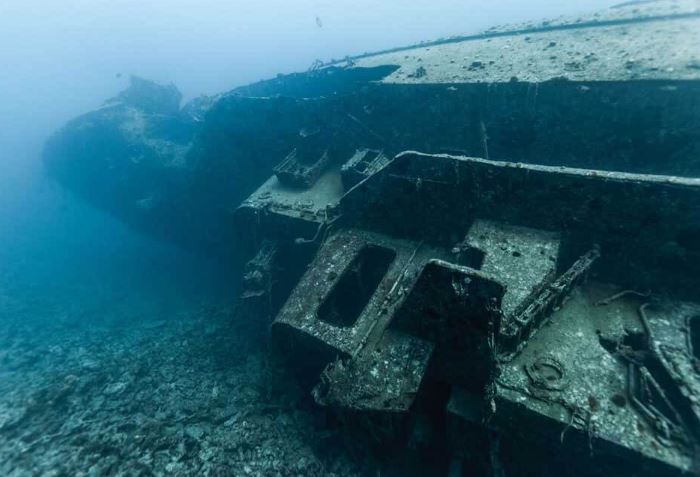
New York Times reporter James Feron made the first page with his report from Jerusalem: (Feron.J. New York Times Feb 07 1970 (P1)) “JERUSALEM, Feb. 6 — Israeli jets attacked and sank a 700‐ton Egyptian minelayer with a crew of 80 in the Gulf of Suez this evening, the Israelis reported. The attack apparently was in retaliation for the sinking of an Israeli coastal vessel in Elath harbor before dawn. The Israeli planes were reported to have caught the Egyptian ship about 35 miles south of Shadwan, the Egyptian island occupied briefly by Israeli commandos recently, at the entrance to the Gulf of Suez. Military officials here said that the minelayer was used in antisubmarine warfare. They said that she carried two gun turrets with double-barrelled 37‐mm cannons and other armament.”
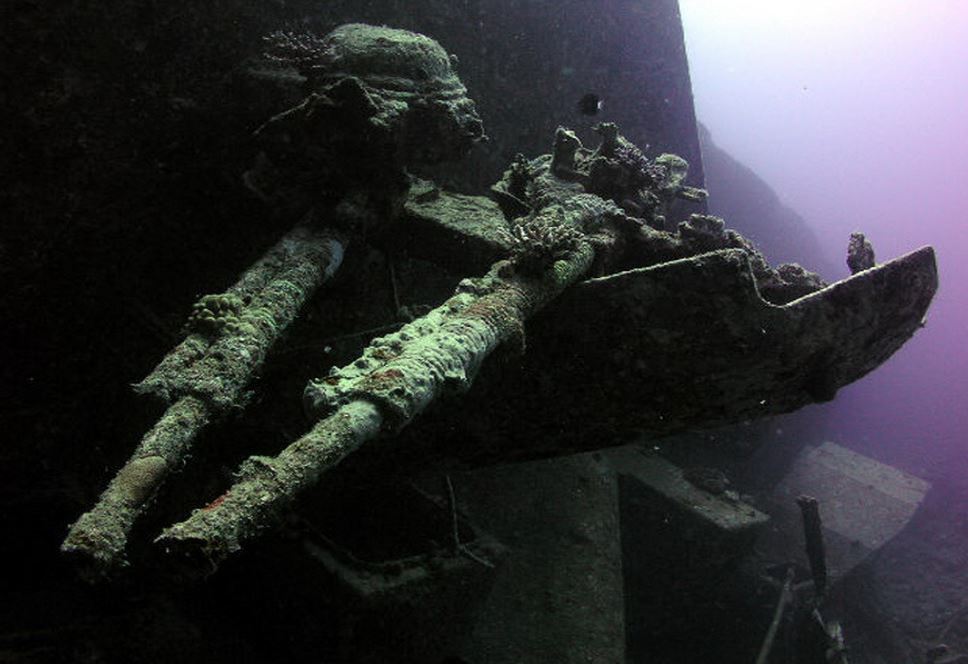
I first dived the El Minya in November of 2008, by this time my “Little Red Wreck Book” was full and the dive is written up in the Green Navy Log and records: “El Mina – HURGHADA HARBOUR Sunk in the Arab Israeli War in 1972 whilst at anchor the wreck lies on its Port Side from the bows @ 17m to the stern @ 32 we opted for 32% mix and Decoplanner software led by the dive guide Nick. The wreck is fantastic – an Egyptian minesweeper. We finned off the shot and up the Port side from the stern to the bow. Open hatches show the mess of debris & wiring collapsed inside. There are 2 wire winches for the towed sweep – one is big – very large bore cable. There are 50 cal AA guns and smaller AA machine guns. Along the deck there are two different sized tow buoys. There is little damage to the main structure and we swam up along the deck to the forward guns and the bow. Six Lion Fish & a shoal of Glass Fish resident at the anchor chains. The starboard side has the blast hole just forward of the bridge area & that opens up the main hull. Would be a good penetration & overall this was a great dive. 32% Nitrox Gas In 220 Out 110 50% Deco for 41 mins (40 on bottom) Buddy Craig/Mark”

I have been lucky enough to visit the Red Sea many times, it’s a place of contrast, from the occasional soldiers isolated for a tour of duty on the Brothers Islands, squat campfire and meagre rations, to the ever developing markets and hotels at Sharm El Sheik, when I first visited Hurghada it was little more than a fishing village and one road town, still distinctly “Arab” despite the two modern hotels stuck at the far end of the quay between the town and its harbour, now Hurghada has swelled and there are new areas of development with more up market hotels and the ubiquitous Hard Rock Café diners, it’s not bad to see, just different. In 1970 when El Minya was attacked Hurghada was a very different place, no hotels, a shanty town road of poor quality buildings and the fisherman’s quay, but perhaps that is a little disingenuous, it was after all not yet a diving resort destination, just an Egyptian fishing village, now even the Brothers Islands sell T Shirts and tourist bracelets….But I digress…..
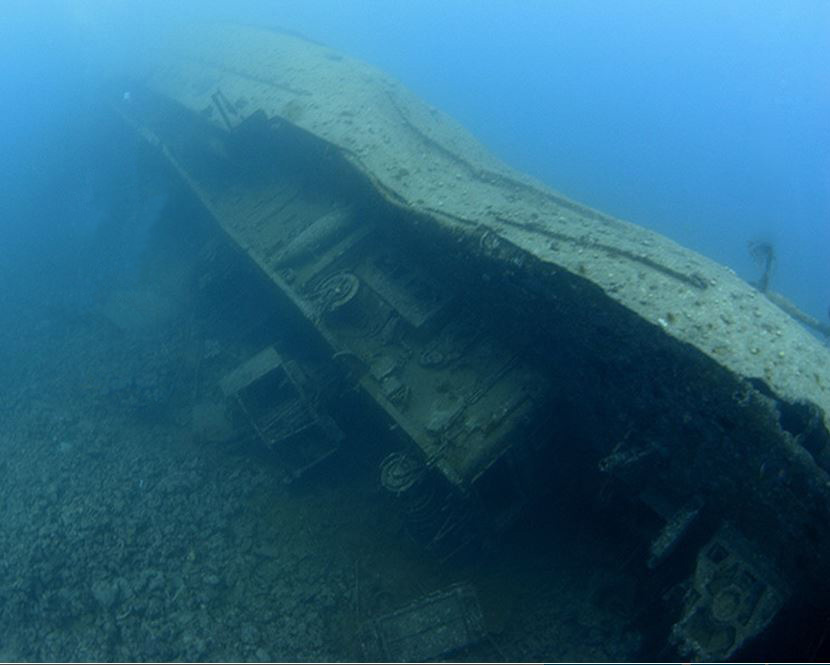
I next dived El Minya in August of 2011: “Red Sea “El Minya” in Hurghada harbour. The ex-Russian mine-sweeper given to Egypt in the ‘60’s on her Port side about 60 m bow to stern! Sunk by missile from Israeli Phantom Jets. We dropped on the stern & past the props through the rudders to get to the deck area and went to the bows along the sea bed past the Stern Guns (AA) and bridge to the deck 50’ cal’s with cases of ammo in a speed loader nearby. From the bow back down the deck at centre line& over the funnel & bridge looking for entry/exits then back from stern to mid-ships where we entered the forward missile damage & went down the ward room to its bulkhead & turned round to swim back through & exit at the bow section bulkhead through a million & more Glassfish in huge shoals which made a great exit & lovely dive end. Air In 200 Out 70 Viz 20m Buddy Craig VR3 deco 2@12 then 8 @ 4.5 W Temp 27’”
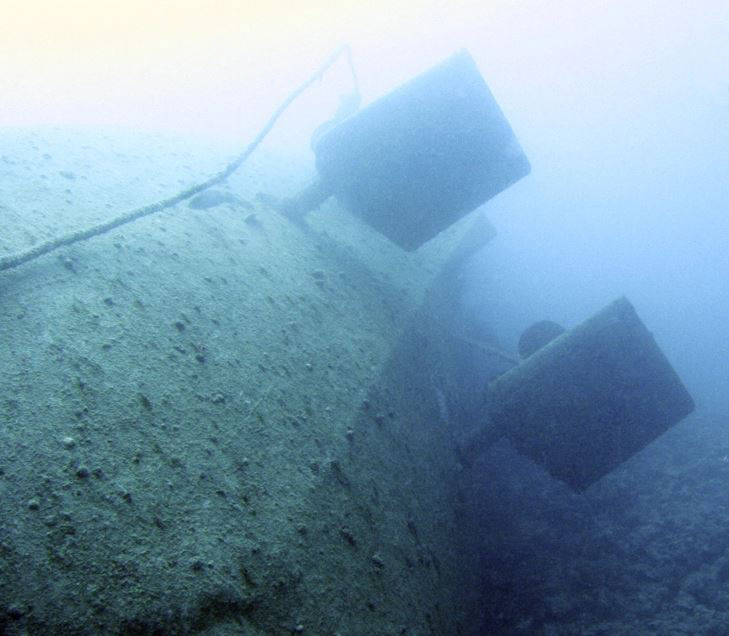
I dived her again in 2013 and once more on my last Red Sea trip in 2015. Every time there is something new to see or something different about her. The 2015 dive we took a look at the barge not far from El Minya, I’ve no idea if it was sunk in the same attack or a later event but there is always something that makes you want to dive her again, she’s a small boat but she has a big piece of history surrounding her and is the only vessel I have dived sunk as a result of a modern rocket attack by Iconic Phantom jets…….
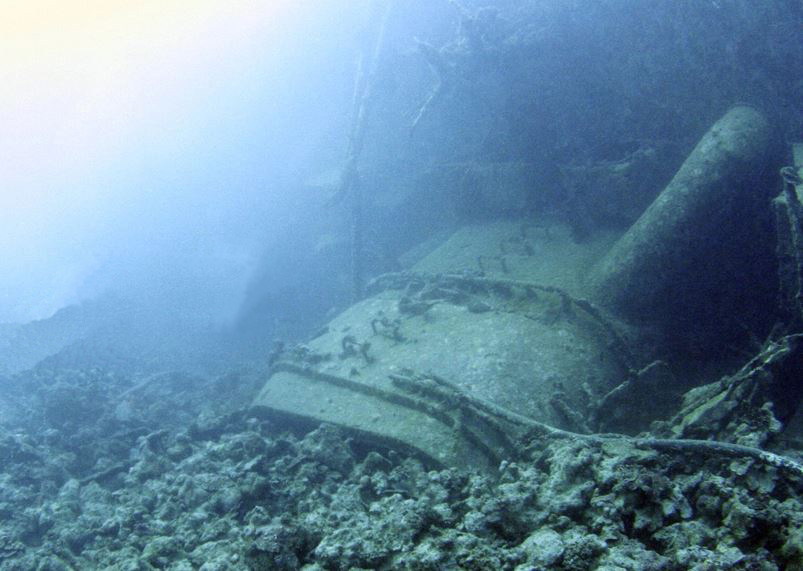
Each dive I have done on El Minya has been a good one, the visibility sometimes in harbour areas can be poor, I’ve been lucky every time on her. The interior has limited opportunity to penetrate but there are places you can get in and swim through, which makes her a challenge on occasion as, by her size, the spaces are somewhat confined. I will post a GoPro dive from 2015 with this piece and you can see one of the routes for yourselves, you can tour the barge too on this one. I do love diving El Minya, there are some who overlook her on the Liveaboards in the area, I don’t understand them, I love rounding off a dive trip with a last dive round this brave reminder of a war most have forgotten long ago
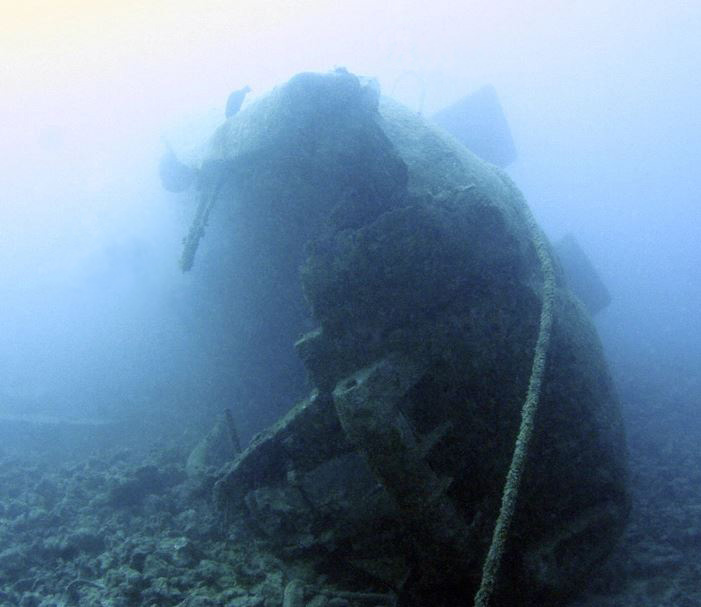
I will leave you with my last dive on El Minya taking in the barge and described in my Navy Log as: “El Minya – A visit to the brave little ex Russian 6 day war victim caught by Israeli Phantoms at anchor – she went down with her anti-aircraft guns blazing & shell cases still remain on the sea bed at her bows in evidence – guns are pointed airborne!! In and out of her along the length from her props at the stern to the bow past the shattered hole in her starboard hull – along the main corridor to exit at the bridge area & back to the stern – I love this dive – Air in 230 Out 100 Buddy Craig”
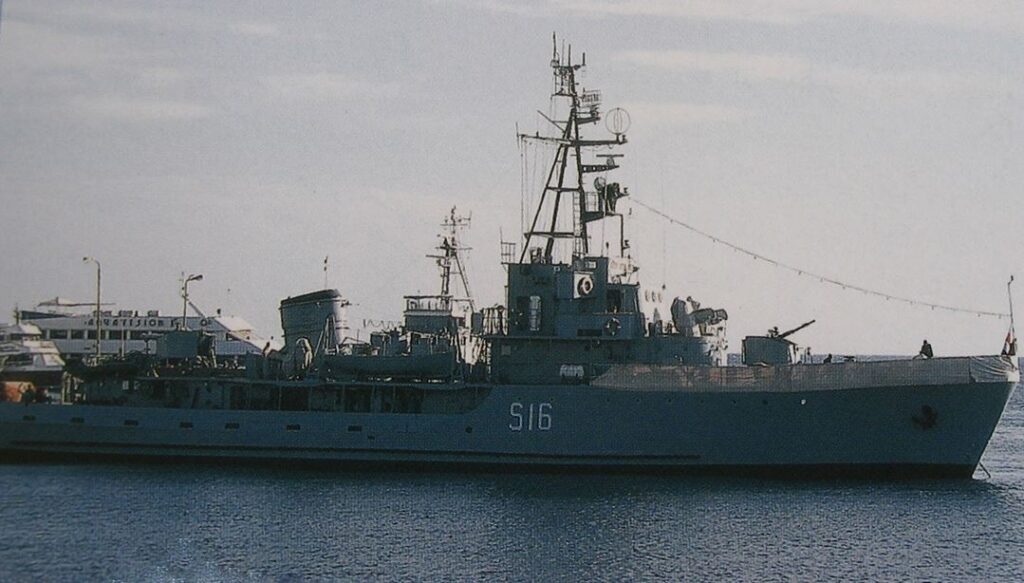
As usual this piece is only possible due to the generosity of those who bring it to life and I am grateful for the use of photos taken by kiwibavarianphotography.com, ahramonline, Divers-Guide, the IDF Spokespersons Unit,Ynetnews, navypedia, The Imperial War Museum, history.navy.mil, Diver Magazine and the brilliant illustrations by Rico Oldfield and courtesy of drive2.ru
Now why not enjoy a dive with me on El Minya
